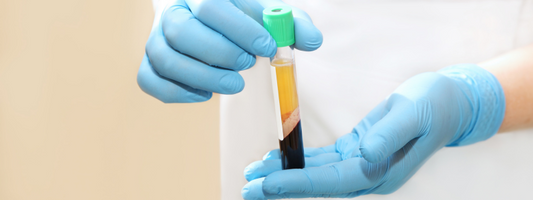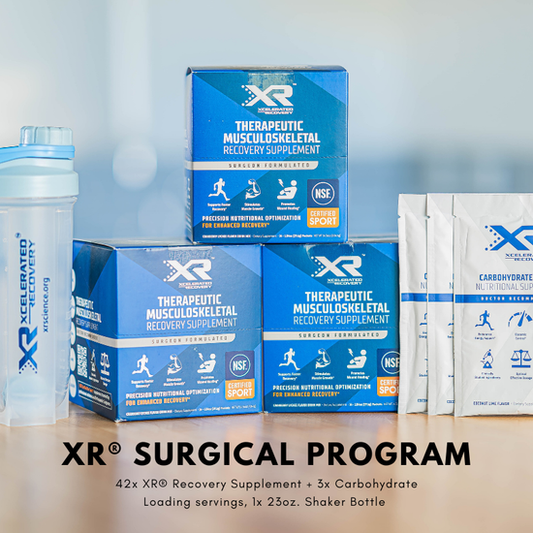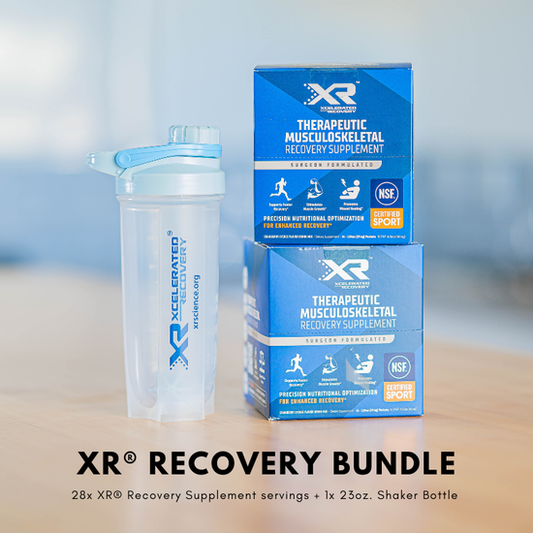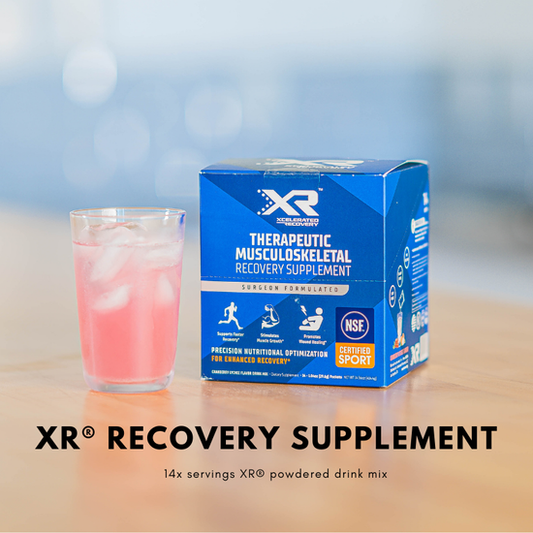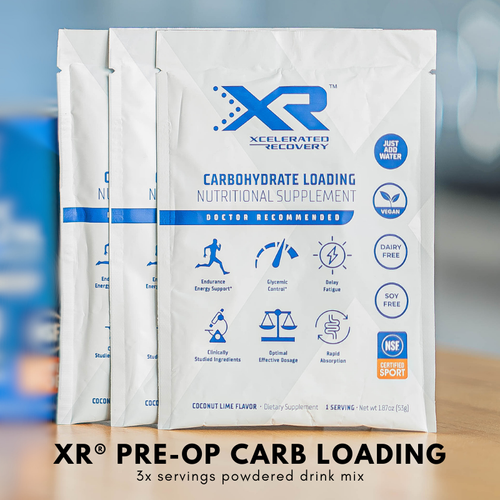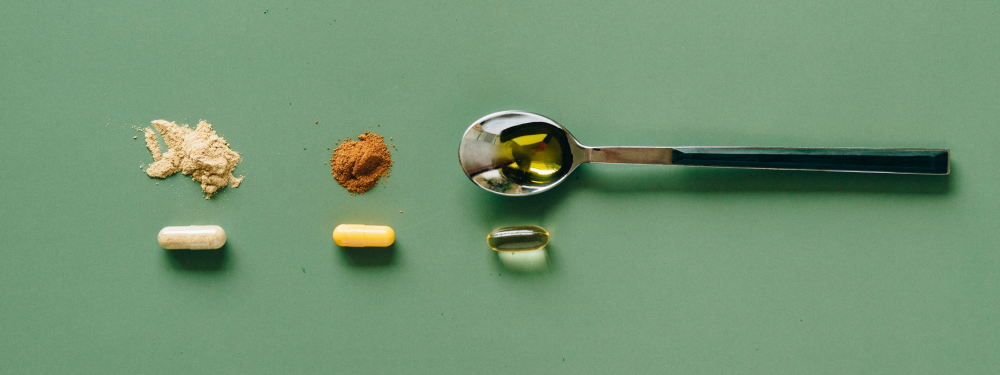
The Best Recovery Supplements for Post-Surgery Patients (2025 Edition)
Share
Recovering from surgery isn’t just about rest — it’s about giving your body the right tools to rebuild, repair, and protect itself. While your surgeon and healthcare team guide your medical care, the nutrition you choose can directly impact how quickly and fully you recover.
With so many products on the market, it can be hard to know which recovery supplements are worth your investment. This 2025 guide breaks down what to look for, why quality matters, and the ingredients backed by research for post-surgical healing.
Why Supplements Matter After Surgery
Surgery places your body in a catabolic state, meaning it breaks down muscle and tissue to supply amino acids for healing, immune defense, and recovery. Without targeted nutritional support, this process can accelerate muscle loss (up to 1% per day in older adults), slow wound healing, increase infection risk, and delay return to normal activities.
The right supplement can help you preserve lean muscle mass, support collagen production for tendons, ligaments, and skin, boost immune function, and speed up rehabilitation gains.
What to Look for in a Recovery Supplement
Clinically Proven Ingredients in the Right Doses
Look for formulas that match the dosing used in peer-reviewed clinical trials. Many products list ingredients without providing enough to make a difference.
NSF Certified for Sport® or Equivalent Third-Party Testing
Certification ensures the product is tested for purity, label accuracy, and banned substances. This is essential for athletes, active adults, and patients concerned about supplement safety.
Targeted to the Needs of Post-Surgical Patients
The nutrient needs of someone recovering from surgery are different from those of general fitness enthusiasts. A true recovery formula should address muscle preservation, tissue healing, and immune support.
Key Ingredients for Surgical Recovery — and the Science Behind Them
Essential Amino Acids (EAAs) + Leucine
EAAs are critical for muscle protein synthesis and recovery after surgery or injury. Leucine is the key amino acid that triggers the mTOR pathway, initiating muscle repair. Clinical studies in orthopedic patients show perioperative EAA supplementation reduces muscle atrophy and improves post-op strength and function.
myHMB® (β-Hydroxy β-Methylbutyrate)
A metabolite of leucine that protects muscle from breakdown during inactivity. Research demonstrates myHMB® supplementation maintains muscle mass in immobilized patients and improves recovery outcomes when combined with resistance training.
Creatine Monohydrate
Increases phosphocreatine stores in muscle, providing rapid energy during rehab exercises. Shown to enhance strength gains and preserve muscle in immobilized or post-surgical patients.
Arginine & Citrulline
Increase nitric oxide production for better circulation, which enhances nutrient delivery to healing tissues. Support collagen synthesis, essential for tendon, ligament, and skin repair.
Cystine + Theanine
Help modulate the immune system and reduce post-surgical inflammation. Clinical evidence supports their role in reducing oxidative stress and supporting recovery in surgical patients.
Vitamins A, C, D, and Zinc
Vitamin A supports epithelial and skin healing. Vitamin C is essential for collagen production and immune defense. Vitamin D helps maintain bone and muscle health during recovery. Zinc is critical for wound healing and immune function.
Our Top Pick for 2025: XR® Therapeutic Musculoskeletal Recovery Supplement
Developed by surgeons, XR® is specifically formulated for the demands of post-surgical recovery. It combines all the above ingredients in clinically meaningful doses, is NSF Certified for Sport®, and is supported by peer-reviewed research.
Why We Recommend XR®
- Evidence-based formulation with leucine-rich EAAs, myHMB®, creatine, arginine, citrulline, cystine + theanine, and targeted micronutrients
- Designed for critical timing: taken daily and within 20–30 minutes after physical therapy to maximize muscle repair
- Trusted by orthopedic surgeons, sports medicine physicians, and rehabilitation specialists nationwide
How to Use Recovery Supplements for Best Results
Start Early: Begin supplementation at least 7 days before surgery (with surgeon approval) to prime your body for healing
Continue Post-Op: Use for at least 2–4 weeks after surgery, covering the high-risk muscle loss period
Time It Right: Take one serving within 20–30 minutes after physical therapy or rehab exercises to optimize muscle recovery
The Bottom Line
In 2025, the best recovery supplements for post-surgery patients aren’t about hype — they’re about science, clinical dosing, and safety. XR® Therapeutic Musculoskeletal Recovery Supplement meets all these criteria and is trusted by healthcare providers nationwide. Whether you’re preparing for surgery or already in recovery, giving your body the right nutrients can mean getting back to your life — stronger and faster.
References
[2] Ueyama H, Arimitsu T, Hashimoto T, et al. Perioperative Essential Amino Acid Supplementation Mitigates Muscle Atrophy After Total Knee Arthroplasty: A Randomized, Double-Blind, Placebo-Controlled Trial. JBJS Am. 2023;105(5):394-403. doi:10.2106/JBJS.22.00541
[3] Hendrickson NR, DePhillipo NN, Aman ZS, et al. Conditionally Essential Amino Acid Supplementation Attenuates Muscle Atrophy After Anterior Cruciate Ligament Reconstruction: A Randomized Controlled Trial. JBJS Am. 2022;104(9):810-817. doi:10.2106/JBJS.21.00697
[4] Ueyama H, Arimitsu T, Fujita S, et al. Essential Amino Acid Supplementation Reduces Muscle Volume Loss After Total Knee Arthroplasty: A Randomized Controlled Trial. Bone Joint J. 2020;102-B(6):719-727. doi:10.1302/0301-620X.102B6.BJJ-2019-1393.R1
[6] Okamoto N, et al. Effects of Essential Amino Acid Supplementation on Muscle Mass, Strength, and Physical Function in Older Adults: A Systematic Review and Meta-Analysis. Nutrients. 2022;14(13):2676. doi:10.3390/nu14132676
[10] Williams JZ, et al. Nutritional Support of the Wound Healing Process. Surg Clin North Am. 2003;83(3):603-620. doi:10.1016/S0039-6109(02)00193-6



